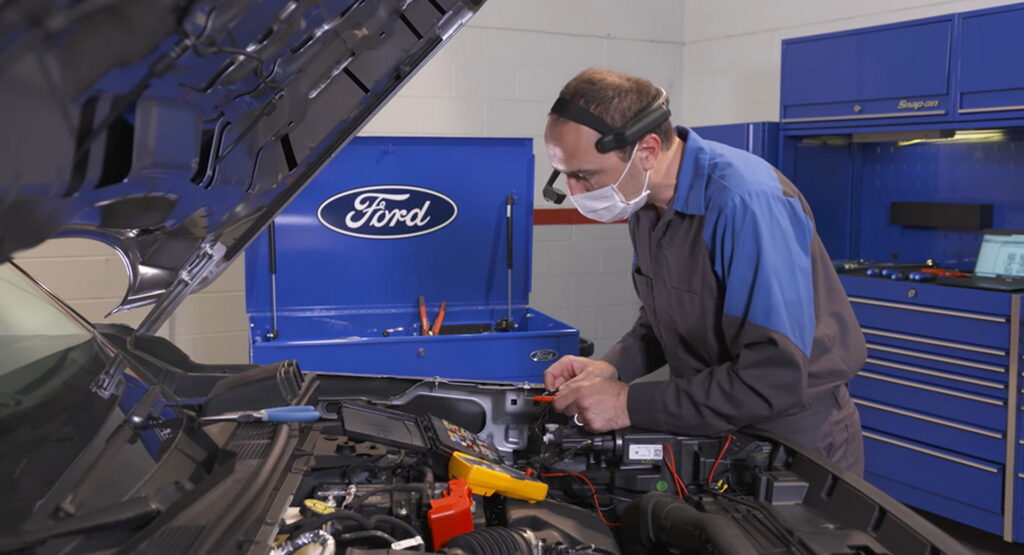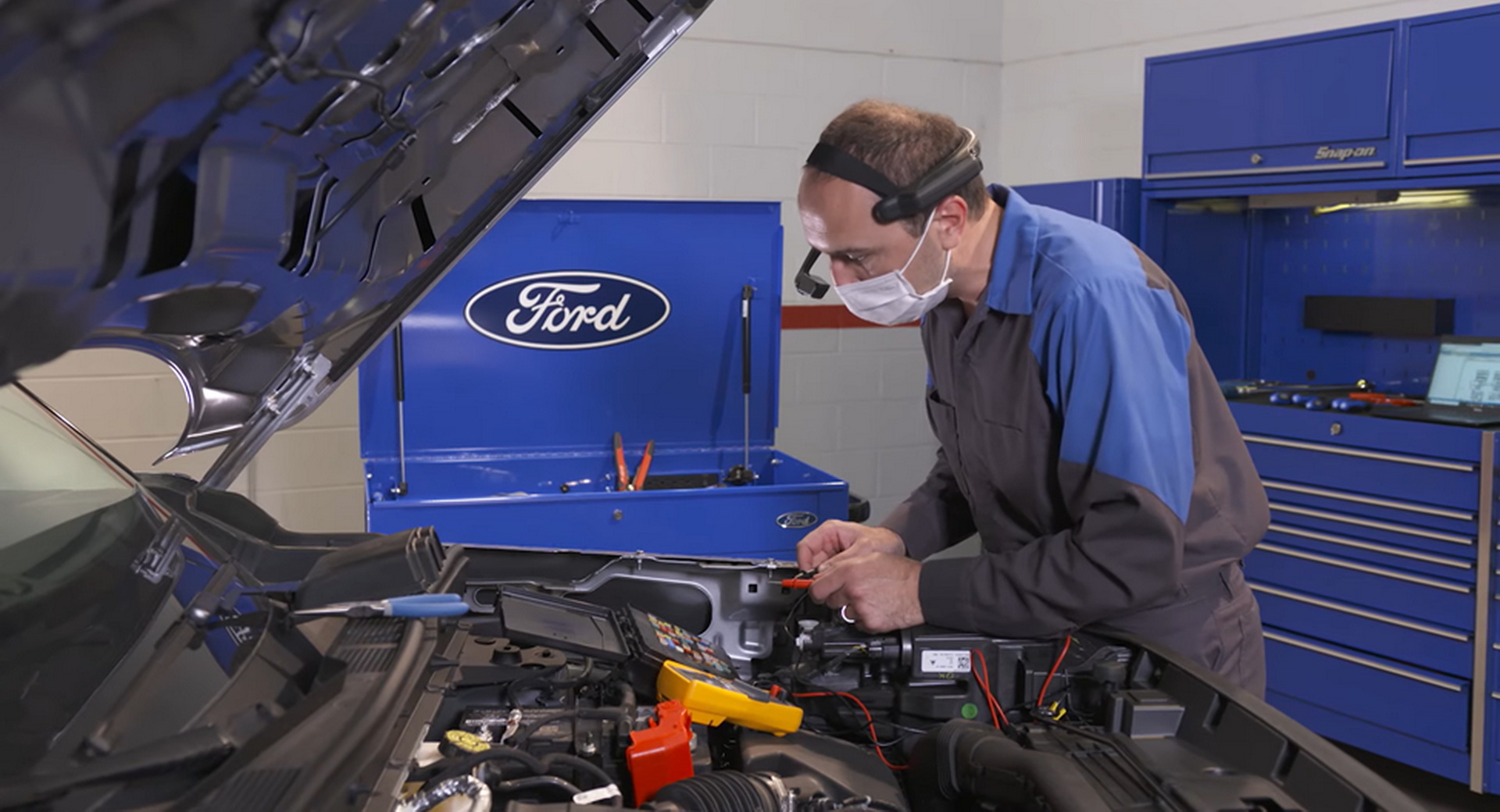Although Ford still hasn’t found a way to give its dealer technicians that third hand anyone who’s worked on a car has been waiting for, it has created a futuristic new tool to help fix tricky issues faster. A new headset with video and audio capabilities allows mechanics to communicate with Ford’s Technical Assistance Center (TAC) in Dearborn, Michigan.
The two-way, hands-free headset uses “See What I See” (SWIS) technology that allows mechanics around the world to show technicians at Ford‘s central assistance center whatever problem is vexing them. This, says David Green, a Ford general service equipment program specialist, makes repairing vehicles faster.
“The remote technology is designed to assist the technicians as they’re working on vehicles — with the goal of increasing efficiency and decreasing downtime for customers,” he notes. “This technology modernizes and simplifies our operations, benefiting everyone involved.”
Read Also: Untrained Tesla Employees Allegedly Being Used To Service Vehicles Faster, Claims Report
Not only do the cameras in the headset allow people at TAC headquarters to see problems in a vehicle, it also has an augmented reality function to allow them to display modified images to the mechanic. This allows them to highlight certain parts and help more effectively.
“We had one case where a [dealer] technician reported the vehicle would not recognize the low tire pressure sensors,” says Green. “When the tech contacted the Hotline using SWIS, they quickly found out they were using the wrong tool when the tech held it up in front of the camera. Once the right tool was used, everything was programmed just the way it should.”
So far, the technology is only being used to diagnose issues, but Ford says it could be used for other applications, too. It wants to utilize the headset to speed up the approval process for replacing windshields and fleet operators could even use the technology someday.
Ford employs around 150 technicians at its TAC headquarters and says they field around 5,000 phone calls from dealerships across the U.S. each week. Describing issues over the phone, though, can be difficult and about 200 of those weekly calls require a Ford agent to go out and check the issue out in person, which is a time-consuming process.
With this SWIS technology, Ford hopes to address more of those issues remotely, accelerating repair times and getting vehicles back to customers faster. So far, the automaker has activated 1,200 headsets and received 350 video calls in the last 90 days.
“SWIS definitely helps get our customers back on the road more quickly,” says Susan Padro, Service Manager at Mullinax Ford in Apopka, Florida. “We’ve had some wiring situations that we were able to fix in a few hours versus a few days using See What I See, and that’s really valuable.”
Ford says that all of its U.S. dealers should have a SWIS system before the end of this year and that it’s also currently being used in Canada, South Africa, the U.K., Puerto Rico, Taiwan, and Australia.






